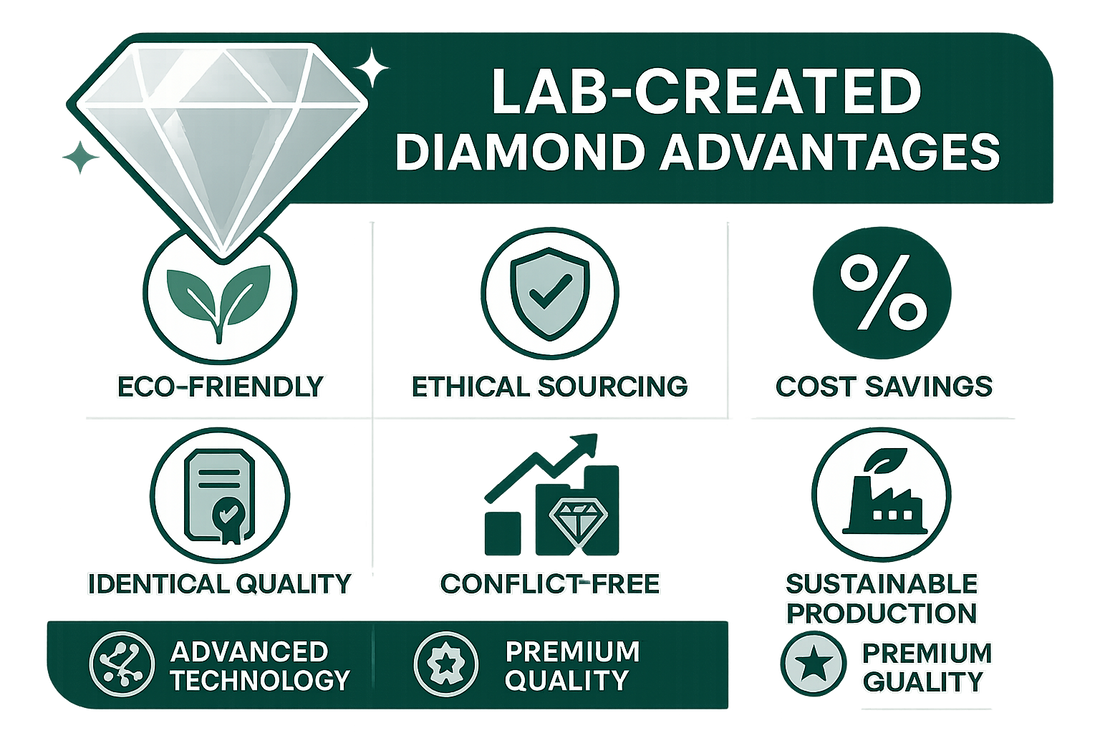
Where Is Lab Grown Diamond From
When you choose a lab-grown diamond, congratulations, you're selecting a stone of modern innovation. But have you ever wondered, "Where does it come from?" Unlike mined diamonds, whose origin is a single, specific mine, a lab-grown diamond's "origin" is a global story of technology, expertise, and sustainability.

The true birthplace of any lab grown diamond is not a country, but a high-tech laboratory. However, the expertise and facilities that create these diamonds are located in key innovation hubs around the world. The journey of a lab-grown diamond is a fascinating blend of science and global collaboration.
What exactly is a lab-grown diamond?
A lab-grown diamond is a real diamond: pure carbon arranged in the same crystal structure (cubic) as mined diamonds. The difference is in origin — instead of forming over billions of years deep in Earth’s mantle, lab-grown diamonds are created in controlled industrial processes that mimic the high pressure, high temperature, or chemical growth conditions diamonds need.
Two Primary Production Methods
Most lab-grown diamonds are created using one of two advanced techniques, each pioneered and perfected in different parts of the globe:
›››››› HPHT (High Pressure High Temperature): This method replicates the natural conditions deep within the Earth. It was one of the first successful methods developed and remains a major production technique.
›››››› CVD (Chemical Vapor Deposition): This method involves breaking down carbon-rich gases in a vacuum chamber, allowing carbon atoms to layer onto a diamond seed plate. It is known for producing high-purity diamonds.
Key Global Hubs for Lab Grown Diamond Production
While labs exist worldwide, a few regions have emerged as leaders:
››››››Asia: China and India are powerhouses in mass production, manufacturing a significant volume of the world's lab-grown diamonds using both HPHT and CVD technologies. They are crucial for making these diamonds accessible on a global scale.
››››››United States: The U.S. is a leader in research, development, and technological innovation. Many American companies focus on creating high-quality, large-carat, and fancy-colored diamonds, pushing the boundaries of what is possible.
››››››Singapore & Europe: These regions are also notable players, housing companies that specialize in cutting-edge CVD technology and premium-grade stones, often with a strong focus on sustainability.
A Diamond's Journey to You
The "origin" story doesn't end at the lab. A diamond might be:
›››››› Grown in a facility in China or India.
›››››› Cut and Polished by master artisans in traditional diamond centers like Surat, India, or Antwerp, Belgium, China, who possess decades of expertise.
›››››› Graded by an international gemological institute (e.g., IGI in Antwerp, Shanghai, New York, or Mumbai).
›››››› Designed and Set by a jeweler in your home country.
The Real Value of Lab Grown Diamond Origin
So, what is the true origin of a lab-grown diamond? It is global. Its value lies not in a single geographic location, but in the human ingenuity and advanced technology that created it. This distributed supply chain ensures efficiency, scale, and quality.
Ultimately, when you choose a lab-grown diamond, you are choosing a gem with a transparent and ethical provenance. Its story is one of science, reduced environmental impact, and a conflict-free guarantee—a truly modern origin for a brilliant gem.
The Future of Lab Diamonds
Advances in CVD and HPHT keep improving quality and scale. Expect wider adoption of lab-grown stones in fine jewelry, growing consumer acceptance, and increased pressure on the industry to be transparent about origin and environmental claims.

